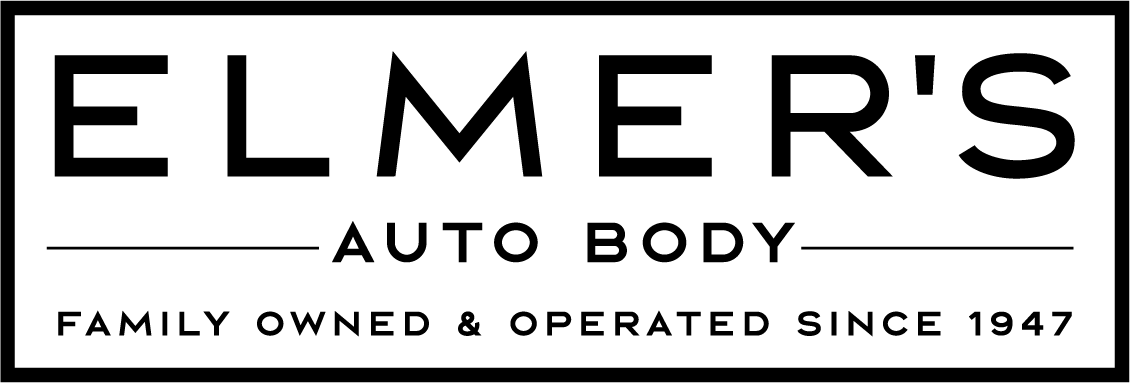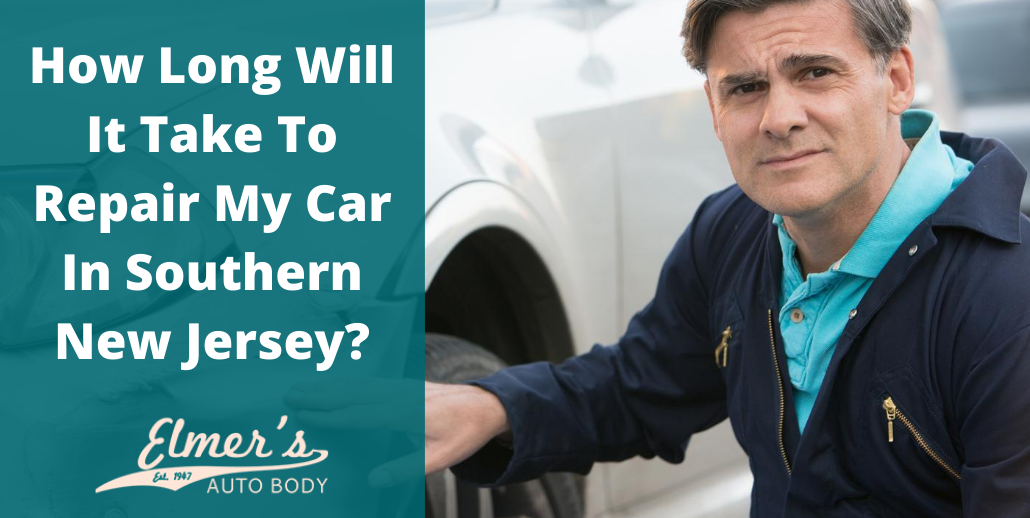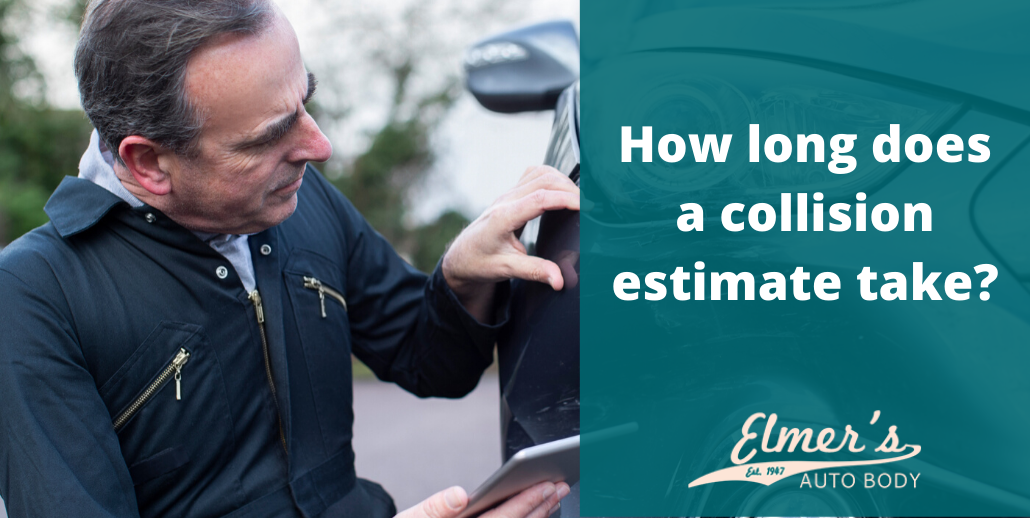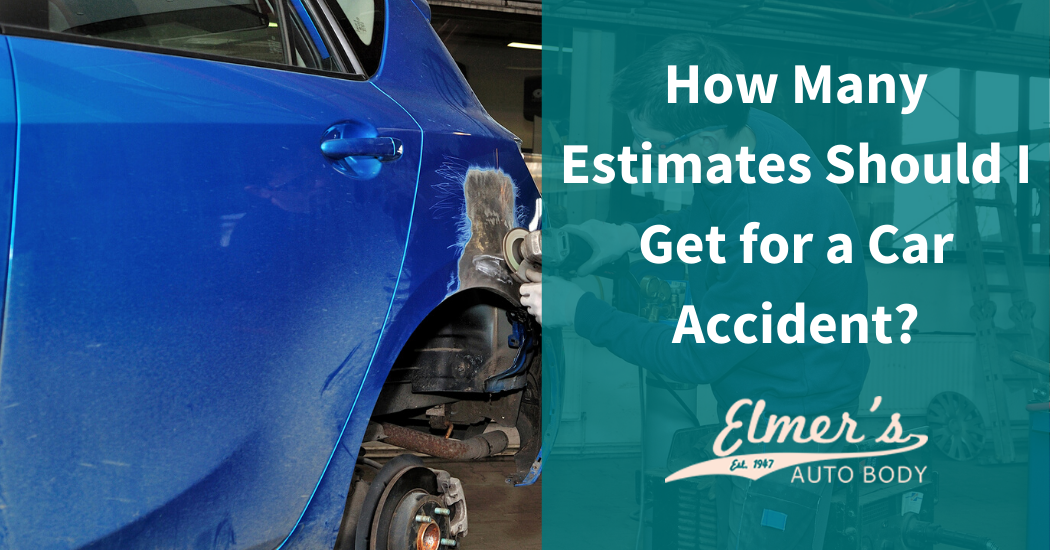Getting into an accident and following through with insurance claims and other responsibilities can seem overwhelming. You just want things to return to normal, but now you have to wait for your vehicle to be repaired. You may find yourself wondering how long it will take or how long you will have to use a rental. The good news is that, most of the time, car repairs take less than a week to finish. There are some occasions, though, where auto body repair may take several months.
Here is everything you need to know to answer the question “How long will it take to repair my car in Southern New Jersey?”
Estimating How Long Repairs Will Take
There are a couple of ways to determine how long it will take for your car to be repaired. If you submitted your insurance claim already, then you need to wait a couple of days for a decision to be reached. Depending on your policy, you may already be assured coverage for damages.
If you know what repairs have to be made on your car, then you can begin estimating the duration of the repairs. Remember that estimates are just estimates. Sometimes, the auto body repair shop will have fewer clients ahead of you. Sometimes, they will have all the parts already in stock. This can accelerate things.
Here are some estimated times for car repairs:
- Minor auto body work – 1-2 days
- Paint touch-up – 1-2 days
- Windshield replacement – Less than 24 hours
- Bumper repairs or replacement – 1 day
- Internal elements – 1-2 weeks
- Extensive damage to internal and external components (if not deemed “totaled”) – Over a month
Factors That Delay Car Repair
There are some occasions where you return to the auto repair shop the next day only to find that there has been a delay, forcing you to wait longer. Although this is frustrating, there are a couple of reasons why this could happen:
- The mechanics are already swamped with work; someone may have called out sick or with an emergency, reducing the labor force
- Your repair may take longer based on what has to be repaired or additional damages have been discovered that also need repairs
- The insurance provider was unable to pay for the repairs on time, so your car is being kept as collateral until the payment arrives
- The parts needed to be ordered directly from the manufacturer
- OEM parts required are expensive and not completely covered by the insurance provider, so you may have to pay
- You own a foreign or exotic model
If you find that the delay period is unreasonable or doesn’t seem justifiable, don’t worry. Get in contact with the auto body shop to learn why and also discuss what is happening with your insurance provider. A solution will be found.
Types of Repair Parts
As mentioned above, there are some instances where special parts needed to be acquired from the vehicle manufacturer prior to repairs. It may take a while for the mechanic to receive the items. This generally depends on the model year of your car. Some parts, called Original Equipment Manufacturer parts, or OEM parts, are the best quality for your vehicle and will restore your car to its fresh-from-the-factory condition.
Any reputable auto body shop is going to want to use OEM, because generic parts could cause damage in the future. Unfortunately, because insurance companies want you to receive your repaired vehicle as soon as possible, there is often pressure on the mechanics to rush. Some body shops are forced to use salvaged pieces or aftermarket items for a quick turnaround, but that can cause ADAS features for functioning optimally.
In short, if you do not wait for the auto body shop to receive the ordered OEM parts, you are setting yourself up for another accident.
But that brings us to a second point: Insurance companies may hesitate to cover the cost of more expensive equipment. At the end of the day, what parts are used and where you go for those repairs is up to you, but that could cause further delay. If the cost goes over the amount allocated by your policy, you will have to cover the rest of the bill.
Elmer’s Auto Body promises to deliver the best repairs using only the highest quality parts.
Need Car Repair in South Jersey?
How long does it take to have a car repaired in Southern New Jersey? It depends on a couple of things, such as what needs to be repaired and how fast your insurer moves. Simple repairs may take a few days, while extensive collision repair could take a few months. If you want the best repairs, you may have to put out a little extra, but it will be worth it later on!
Looking for a customer-focused auto body repair shop in South Jersey? Get in touch with us to learn more about what we can do for you by filling out the contact form.







